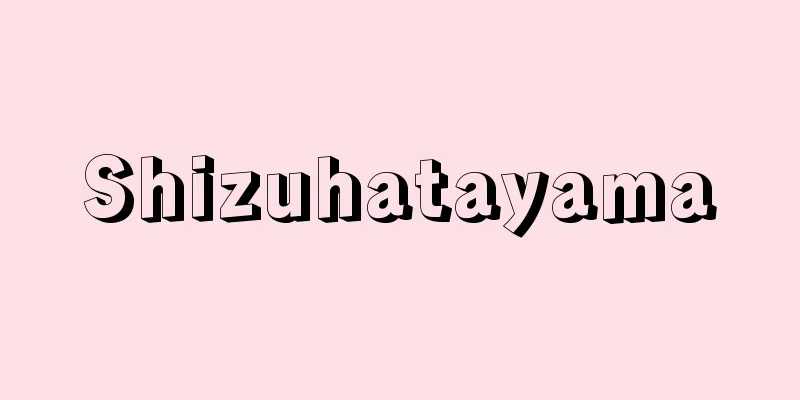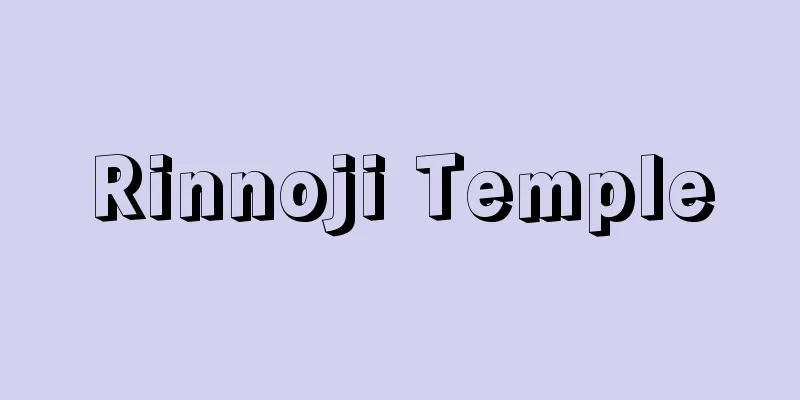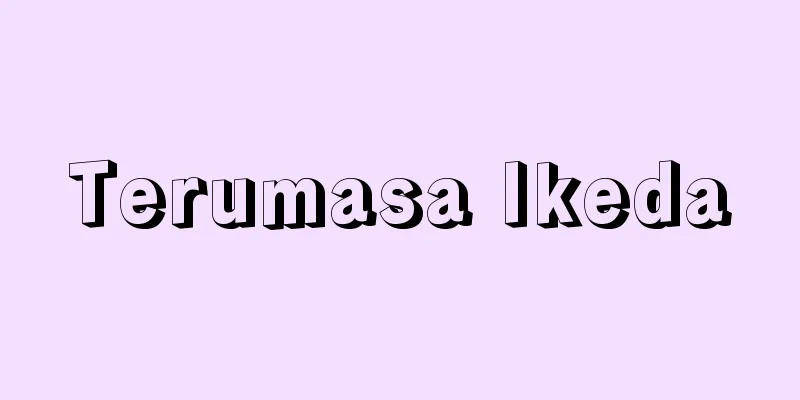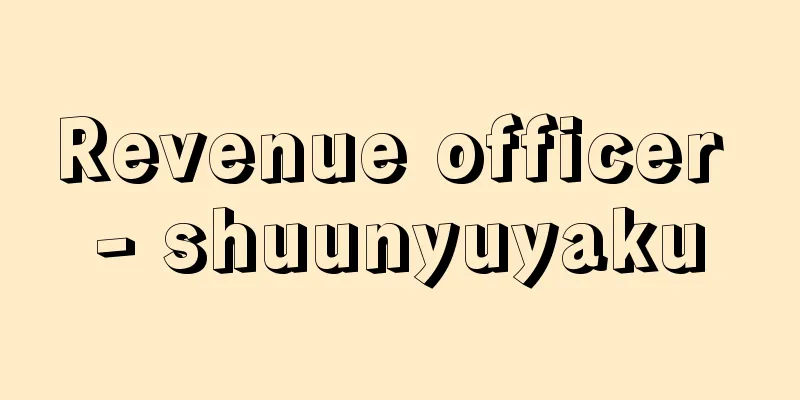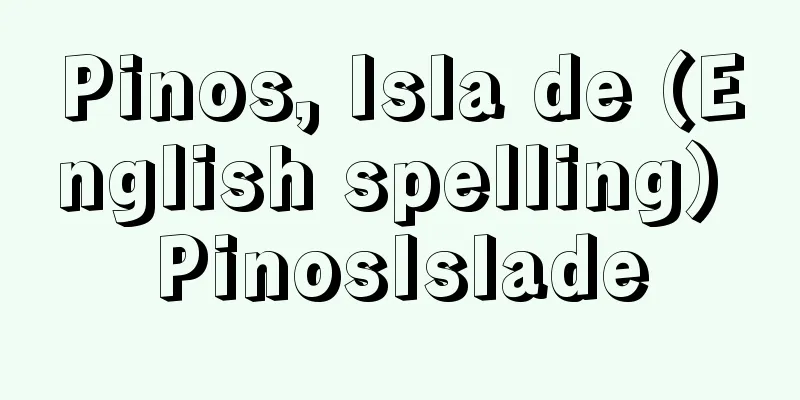Trademark - shouhyo (English) trade mark
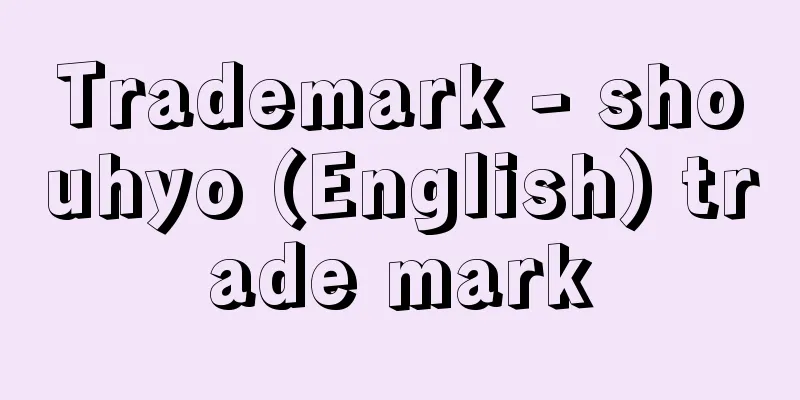
|
A mark is a sign used in connection with goods or services that a business operator uses to distinguish the goods or services that he or she handles or provides from those of others. It is also called a trademark. The Trademark Act (Act No. 127 of 1959), which protects trademarks, has been partially revised many times, and in the 1991 amendment, the definition of a trademark (Article 2) itself was also revised, and signs used in connection with services (so-called service marks), which had previously been excluded, were now also treated as trademarks. Legally, marks used in connection with goods are called product trademarks, and marks used in connection with services are called service trademarks. Furthermore, in the 1996 amendment, three-dimensional shapes were also treated as trademarks (three-dimensional trademarks), in addition to shapes that were previously limited to flat, visually appealing shapes. According to Article 2, which provides the definition, a trademark is: (1) Use in relation to goods by a person who produces, certifies, or transfers goods as a business; (2) Use in relation to services by a person who provides or certifies services as a business (excluding those listed in the preceding paragraph) As a result, service marks are now protected by trademark law, and three-dimensional marks are now treated as trademarks. A trademark is a sign used on goods or services, so personal signs such as a name, trade name, or company mark cannot be considered a trademark unless they are used as a sign indicating the goods or services. Article 2 defines the "use" of a mark when it is used on goods or services. When a mark is affixed to a product, it does not have to be affixed directly to the product, but it must be used in relation to the product, such as on the product's container or packaging, or on the provision or advertisement via the Internet. The forms of using a mark on a service include affixing the mark to an object that is made available to the recipient of the service, using an object with the mark, displaying a mark on a screen to provide the service, and displaying an object with the mark for the provision of the service. In addition, advertising for goods or services, displaying or distributing a price list or transaction document with the mark, and providing information with the mark by electromagnetic means are also included. Goods here refer to objects that can be the subject of a transaction, especially movable property. In addition, a service is a labor or benefit performed for another person, which can be the object of a commercial transaction independently. Insurance companies refer to newly designed insurance as "new products," but these insurances are services and not products under the Trademark Act. A trademark is used in business to distinguish one's own goods or services from those of others and to indicate the identity of goods or services, so a trademark used personally cannot be considered a trademark. A trademark not only has the function of distinguishing one's own goods from those of others, but also has the functions of indicating the source, guaranteeing quality, and advertising, and as a result of these functions being recognized as having social and economic value, legal rights are granted to trademarks. [Takino Hideo] Trademark evolutionThe origins and history of marks are extremely ancient, and there were marks called potter's marks which can be found on artifacts excavated from ancient Egypt and on pottery from ancient Greece and Rome, marks called merchant's marks or ownership marks which were attached in the Middle Ages to prove ownership of goods in the event of a shipwreck or theft, and marks called responsibility marks or police marks which were used to clarify responsibility for the weight, quality and craftsmanship of the goods. However, all of these are different from modern trademarks, which are recognized as property rights and protected under the law, like trademarks. In the latter half of the 18th century, the Industrial Revolution established a capitalist society, and as the means of production were mechanized and distribution systems were developed, it became necessary for consumers, producers and sellers to have a system to protect trademarks, which exist as property rights and have the function of distinguishing one's own product from others. In response to this social situation, France enacted the "Law on Factories, Manufactures and Workshops" in 1803, which stipulated in Article 16 that the theft of a trademark would be a crime of forgery of a private document, but did not go so far as to recognize trademarks themselves as property rights. Later, France also enacted the world's first trademark law, the "Law on Manufacture Marks and Trademarks on the Basis of Use and No Examination" in 1857, which has been succeeded by the current law, the "Law on Trademarks or Service Marks on the Basis of Registration" (1964). In the UK, the Merchandise Marks Act was enacted in 1862, followed by the Trademark Registration Act in 1875, and a more comprehensive Trademark Act was enacted in 1905. It was subsequently amended several times to become the current law (1938), which adopted the principle of use, the principle of examination, and a system of publication. In Germany, the Trademark Protection Act was enacted in 1874, which was replaced in 1894 by the Trademark Act, which adopted the principle of examination, and after several amendments, became the current law (1967). In the United States, the Federal Trademark Act was enacted in 1870, which was amended several times until the current law, which adopted the principle of use, was enacted in 1946. In Japan, it has long been the practice to mark swords, handicrafts, and other items with the name or signature of the maker, but these were no different from the potter's mark mentioned above and are different from modern trademarks. As a result, as part of the modernization policy of the Meiji government, the Trademark Ordinance was enacted in 1884 (Meiji 17) which adopted the registration and first-to-file principles, and in 1888, the Trademark Ordinance was enacted which adopted the advantages of Western countries. After the revised Trademark Law in 1899 to join the Alliance Convention for the Protection of Industrial Property, the Meiji 42 Act, and the elaborate Taisho 10 Act, the current Trademark Law was enacted in 1959 (Showa 34) which established a system of free transfer of trademark rights, a licensing system, a defensive mark system, and other systems. [Takino Hideo] Trademarks and trade namesA trademark is a letter, figure, symbol, three-dimensional shape, or a combination of these used to distinguish one's own goods or services from those of others, whereas a trade name is a name used by a merchant to represent himself or herself in the course of business activities and is expressed in letters only. Trade names are called personal marks because they indicate the merchant who is the subject of rights and obligations under the law. However, if the same trade name is used for many years, the trade name itself will have the functions of a trade mark that indicates the creditworthiness of the business, and the function of identifying the source of the product or the product of one's own company and others, which will overlap with the functions of a trademark. Taking note of these functions of trade names, some people have registered their trade names as trademarks, or made their trade names with the characters that make up their own trademarks as their essential parts. For example, there are many examples, such as Tokyo Tsushin Kogyo Co., Ltd., which changed its name to Sony Corporation three years after it began using the Sony trademark. By registering a trademark, the exclusive right to use it extends nationwide, but by registering a trade name, it has the effect of preventing others from registering the same trade name for the same business within the same city, town, or village, and prohibiting the use of the same or similar trade names for the purpose of unfair competition (Commercial Code, Article 12). [Takino Hideo] Trademark rightsTrademark rights, like other industrial property rights, are called intangible property rights or intellectual property rights because their object is an abstract intangible object. Trademark rights can be said to have the same nature as ownership rights, since the owner can use the trademark exclusively for the designated goods or services and can exclude others from using it without permission. The object of a trademark right is not an invention, device, or design that is the result of human mental creative activity, as other industrial property rights such as patent rights, utility model rights, and design rights, but the sign itself, which is selected to be suitable for industrial activity. Therefore, if the sign can distinguish one's own goods or services from similar goods or services of others, is qualified as a trademark, and there is no reason for non-registration for public or private interests, it will be protected as a right even if it does not have creativity or novelty. [Takino Hideo] Trademark LawThe Trademark Law is a law that protects trademarks, which are signs of goods or services, and stipulates basic matters regarding the creation and effectiveness of trademark rights. The Trademark Law belongs to industrial property laws, but unlike the Patent Law and other laws that protect intellectual creations, it protects signs in trade, and is said to be a law that maintains competitive order, just like the Unfair Competition Prevention Law and regulations regarding trade names. Therefore, the Trademark Law has a dual nature: it not only protects the private interests of trademark owners, but also the public interests of general consumers. Article 1 of the Trademark Law stipulates that "The purpose of this Law is to maintain the business credibility of those who use trademarks by protecting trademarks, thereby contributing to the development of industry and protecting the interests of consumers." [Takino Hideo] Right to Use TrademarksA trademark owner has the exclusive right to use the registered trademark for the designated goods or services (Article 25 of the Trademark Law), but can grant other people exclusive rights of use or ordinary rights of use. Article 2, Paragraph 3, Items 1 to 10 of the same law provide detailed provisions regarding "use." [Takino Hideo] Expiration of trademark rightA trademark right is extinguished due to the following reasons: expiration of the duration (however, renewal is possible), finalization of a decision to invalidate the registration, absence of an heir, abandonment of rights, cancellation due to non-use, cancellation due to unauthorized use by the trademark owner, cancellation due to misidentification or confusion by the licensee, cancellation of the trademark registration made by an agent of a foreign trademark owner without the consent of the owner. In particular, if a registered trademark has not been used for the designated goods in Japan by the trademark owner, the exclusive licensee, or the ordinary licensee for more than three consecutive years, a third party may request a trial to cancel the trademark registration for the goods that are not being used (Article 50, Paragraph 1 of the Trademark Act). This system can be said to introduce the advantages of the use principle into the Japanese trademark law that follows the registration principle. This has had a significant effect in promoting the sorting out of trademarks that are not being used for the distribution of goods. [Takino Hideo] Service MarkA service mark is a sign (emblem) used in connection with services such as banking, insurance, advertising, warehousing, transportation, communications, and civil engineering and construction. In Japan, service marks were not protected by the Trademark Law as they were different from "trademarks" used in connection with goods, but the amendment to the Trademark Law in 1991 meant that service marks are also treated as trademarks (Article 2 of the same law). Legally, they are called service marks. The service mark registration system has been adopted in many countries, including major countries such as the United States, Canada, France, Germany, and Italy. [Takino Hideo] Subsequent developmentsIn the United States, the European Union (EU), Australia, and other countries, distinctive sounds and specific images are protected as trademarks. With the conclusion of the Trans-Pacific Partnership (TPP) negotiations, it became increasingly likely that "new types of trademarks" such as sounds would become international rules, so the Japanese government took the initiative and amended the Trademark Act in 2014 (effective April 2015) to introduce "new types of trademarks." Previously, only characters, symbols, and figures with fixed shapes could be registered, but now five types of trademarks can be registered: (1) "motion" trademarks in which characters and figures change over time, (2) "hologram" trademarks in which characters and figures change depending on the viewing angle, (3) "color" trademarks consisting of a single color or a combination of multiple colors, (4) "sound" trademarks consisting of melodies, dialogue, and natural sounds, and (5) trademarks in which the "position" of characters, figures, etc. on a product is specified. For example, registered "sound" trademarks include Taisho Pharmaceutical's energy drink "Fighto, Ippattsu," a "color" trademark is the "orange, green, and red stripes on a white background" used by Seven-Eleven Japan on its signs, a "movement" trademark is the "video of the Toho logo shining" at the beginning of a Toho movie, and a "position" trademark is Edwin's "red tag sewn into the corner of the pocket of their jeans." As of March 2017, 110 "sound" trademarks, 65 "movement" trademarks, 23 "position" trademarks, 9 "hologram" trademarks, and 2 "color" trademarks have been registered. [Takeshi Yano December 12, 2017] "Industrial Property Law" by Toyosaki Mitsue (1980, Yuhikaku)" ▽ "Trademark Law Overview" by Ono Masanobu, 2nd Edition (1999, Yuhikaku)" ▽ "Trademark Law Overview" by Tamura Yoshiyuki, 2nd Edition (2000, Kobundo)" ▽ "Article-by-Article Commentary on the Industrial Property Law, edited by the Japan Patent Office, 16th Edition (2001, Japan Institute of Invention and Innovation)" ▽ "Trademarks" by Amino Makoto, 6th Edition (2002, Yuhikaku)" ▽ "50 Lectures on Trademark Law, edited by Montani Nobuo (Yuhikaku Books)" [Reference items] | | | | | |Source: Shogakukan Encyclopedia Nipponica About Encyclopedia Nipponica Information | Legend |
|
事業者が自己の取り扱う商品や自己の提供する役務を他人の商品や役務と区別するために商品または役務について使用する標識をいう。トレードマークともいう。商標を保護対象とする商標法(昭和34年法律第127号)は幾度となく部分的改正が行われているが、1991年(平成3)の改正では商標の定義(2条)自体も改正され、従来除外されていた役務について使用する標識(いわゆるサービスマーク)も商標として取り扱うことになった。法律上は、商品に使用するものを商品商標、役務に使用するものを役務商標と称している。さらに1996年の改正では、従来平面的で視覚に訴えるものに限られていた形状について、立体的形状も商標(立体商標)として取り扱うように改正された。定義等を規定する第2条によれば、商標とは、 一 業として商品を生産し、証明し、又は譲渡する者がその商品について使用をするもの したがって、サービスマークも商標法で保護されることとなり、また、立体標章も商標として取り扱われることとなった。 商標は商品または役務について使用される標章(標識)であるから、氏名、商号、社標などの人的標識は、それが商品または役務を表示する標識として使用されない限り、商標とはいえない。標章を商品や役務について使用する場合の「使用」の定義を第2条で規定している。標章を商品に付す場合、当該商品に直接付せられる必要はないが、商品の容器・包装、インターネットを通じた提供または広告など商品との関係において使用されることが必要である。標章を役務について使用する形態としては、役務の提供にあたりその提供を受ける者の利用に供する物に標章を付したり、当該標章を付したものを用いたり、映像面に標章を表示して役務を提供する行為、当該標章を付したものを役務の提供のために展示する行為等が規定されている。また、商品や役務に関する広告、定価表または取引書類に標章を付して展示したり、頒布したり、情報に標章を付して電磁的方法により提供する行為も該当する。ここでいう商品とは取引の目的となりうべき物、とくに動産をいう。また、役務とは他人のために行う労務または便益であって、独立して商取引の目的となりうるものをいう。保険会社などにおいては新しく企画された保険を「新商品」などといっているが、これらの保険は役務であって、商標法上の商品ではない。 商標は業として使用されるもので、自他商品または自他役務を識別し、かつ商品または役務の同一性を表示するために使用されるものであるから、個人的に使用されるものは商標とはいえない。商標は自他商品等を識別する機能を有するばかりでなく、出所表示機能、品質保証機能および宣伝広告機能などを有するもので、これらの機能に社会的・経済的価値が認められる結果、商標に法律上の権利が与えられているのである。 [瀧野秀雄] 商標の変遷標識の起源や歴史はきわめて古く、古代エジプト時代の発掘品や、古代ギリシア・ローマ時代の陶器などにみられる陶工標とよばれる標識、中世において海難・盗難などにあったとき商品の所有権を立証するために付せられた商人標または所有標とよばれる標識、商品の量目・品質・技術に対する責任を明らかにするための責任標または警察標とよばれるものなどがあったが、いずれも、現代の商標のように商標自体が財産権として認められ、法の下(もと)に保護されているものとは異なっている。 18世紀後半に産業革命によって資本主義社会が成立し、生産手段が機械化され、流通機構が整備されるにしたがって、需要者はもとより生産者および販売者にとって必然的に財産権として存在し、かつ自他商品識別の機能を有する商標を保護する制度を必要とするようになった。そのような社会情勢から、1803年フランスにおいて「工場、製造場および仕事場に関する法律」が制定され、その第16条に商標の盗用が私文書偽造の罪となると規定されたが、商標自体を財産権として認めるまでには至らなかった。その後同じくフランスで世界最初の商標法ともいうべき「使用主義および無審査主義を内容とする製造標および商標に関する法律」が1857年に制定され、現行法の「登録主義を内容とする商標またはサービスマークに関する法律」(1964)に受け継がれている。イギリスにおいては1862年に商品標法が、続いて1875年に商標登録法が制定され、1905年には、より整備された商標法が制定された。その後改正を重ねて、使用主義、審査主義、公告制度を採用した現行法(1938)となっている。ドイツにおいては1874年に商標保護法が制定され、1894年審査主義を採用した商標法に変わり、改正を重ねたのち現行法(1967)となっている。アメリカにおいては1870年、連邦商標条例が制定され、改正を重ねて1946年に使用主義を採用した現行法が成立した。 日本においては、古くから刀剣、手工芸品などに製作者の銘、氏名などを入れることが行われていたが、これらは前記の陶工標の類を出ないもので、現代の商標とは異なるものである。そこで明治政府による近代化政策の一つとして、1884年(明治17)登録主義・先願主義などを採用した商標条例が制定され、1888年欧米諸国の長所を採用した商標条例が制定された。1899年工業所有権保護同盟条約に加入するための改正商標法、同明治四十二年法、精緻(せいち)な同大正十年法を経て、商標権の自由譲渡制・使用許諾制度・防護標章制度などを新設した現行の商標法が1959年(昭和34)に制定された。 [瀧野秀雄] 商標と商号商標が自他商品または自他役務を識別するために使用される文字、図形、記号、立体的形状またはそれらの結合された標識であるのに対し、商号は商人が営業上の活動において自己を表すための名称であり、文字のみで表示される。 商号は法律上は権利・義務の主体である商人を表示するものであるから人的標識といわれているが、同一の商号を永年にわたり使用していると商号自体が営業上の信用を表示する営業標識の機能と、商品の出所または自他商品を識別する機能をもつようになり、商標のもつ機能と交錯するようになる。商号のこのような機能に着目して、商号を商標として登録したり、自己の商標を構成する文字を要部とした商号にすることが行われている。たとえば東京通信工業株式会社がソニーの商標を使い始めてから3年後に社名もソニー株式会社に商号変更したなど多くの例がある。商標は登録されることにより独占的使用権は全国に及ぶが、商号は登記されることにより、同一市町村内で同一の営業のため同一の商号を他人が登記することを防ぎ、不正競争の目的をもって同一または類似の商号の使用を禁止する効力を有する(商法12条)。 [瀧野秀雄] 商標権商標権は他の工業所有権(産業財産権)と同じくその客体が観念的な無体物である点で無体財産権または知的財産権とよばれる。商標権は指定商品または指定役務について当該商標を独占して使用することができ、かつ他人が許諾なくして使用するのを排除することができるものであるから、所有権と同じ性質を有するものといえる。商標権の客体は特許権、実用新案権、意匠権等の他の工業所有権のように人間の精神的な創作活動の成果である発明・考案・意匠を客体とするものではなく、産業活動に適するように選択された標識自体である。したがって、その標識が他人の同種の商品または役務と、自己の商品や役務とを識別することができるものであり、商標としての適格性を有しかつ公益上・私益上の不登録事由がなければ、創作性や新規性がなくても権利として保護される。 [瀧野秀雄] 商標法商標法は商品または役務の標識である商標の保護に関する法律で、商標権の発生、効力等について基本的事項を規定している。商標法は工業所有権法に属するが、特許法等が精神的創作物を保護の対象としているのと異なり、取引における標識を保護する点で、不正競争防止法や商号に関する規定と同じく、競業秩序を維持する法律といわれている。したがって商標法は商標権者の私益保護のみならず、一般需要者の公益保護という二面的性質をもつものである。商標法第1条には、「この法律は、商標を保護することにより、商標の使用をする者の業務上の信用の維持を図り、もつて産業の発達に寄与し、あわせて需要者の利益を保護することを目的とする」と規定している。 [瀧野秀雄] 商標を使用する権利商標権者は、指定商品または役務について登録商標の使用をする権利を専有する(商標法25条)が、他人に専用使用権を設定したり、通常使用権を許諾したりすることができる。そして同法第2条3項1号~10号には「使用」について、詳細に規定している。 [瀧野秀雄] 商標権の消滅商標権は、存続期間の満了(ただし更新が可能)、登録無効審決の確定、相続人の不存在、権利の放棄、不使用による取消し、商標権者の不正使用による取消し、使用権者の誤認や混同行為を理由とする取消し、外国商標権者の承諾なくしてその代理人等によりなされた商標登録の取消しなどの原因によって消滅する。とくに登録された商標が継続して3年間以上、日本国内において商標権者、専用使用権者、通常使用権者のいずれによってもその指定商品について使用されていないときは、第三者はその使用されていない商品について商標登録の取消しの審判を請求することができる(商標法50条1項)という制度は、登録主義に従う日本の商標法に使用主義の利点を導入したものということができる。このことは、商品流通のために使用されていない商標の整理を促進する大きな効果をあげている。 [瀧野秀雄] サービスマークサービスマークは、銀行、保険、広告、倉庫、運送、通信、土木建築業などのサービス(役務)について使用する標識(標章)である。日本では、従来は標章を商品について使用する場合の「商標」とは異なるものとして商標法では保護されなかったが、1991年の商標法の改正によりサービスマークも商標として取り扱われることになった(同法2条)。法律上は、役務商標と称している。サービスマークの登録制度は、アメリカ、カナダ、フランス、ドイツ、イタリアなど主要国はもとより、多くの国が採用している。 [瀧野秀雄] その後の動きアメリカ、ヨーロッパ連合(EU)、オーストラリアなどでは、特徴ある音声や特定の映像などを商標として保護している。TPP(環太平洋経済連携協定)交渉が妥結し、音声など「新しいタイプの商標」が国際ルール化される可能性が高まったため、先行して日本政府は2014年(平成26)、商標法を改正(2015年4月施行)し「新しいタイプの商標」を導入した。従来は形が定まった文字、記号、図形などしか登録できなかったが、(1)文字や図形などが時間経過に伴って変化する「動き」商標、(2)文字や図形などが見る角度によって変化する「ホログラム」商標、(3)単色または複数の色の組合せのみからなる「色彩」商標、(4)メロディー、セリフ、自然音からなる「音」商標、(5)文字や図形などの商標を商品などにつける「位置」が特定される商標、の5種類が登録可能になった。たとえば、「音」商標では、大正製薬のドリンク剤の「ファイトー、イッパーツ」、「色彩」商標ではセブン‐イレブン・ジャパンが看板などに使用している「白地にオレンジ、緑、赤の縞(しま)模様」、「動き」商標では、東宝の映画冒頭の「東宝ロゴが光り輝く動画」、「位置」商標ではエドウィンの「ジーンズのポケットの隅に縫い付けられた赤色タグ」などが登録された。2017年3月時点で、「音」商標が110件、「動き」商標が65件、「位置」商標が23件、「ホログラム」商標が9件、「色彩」商標が2件登録されている。 [矢野 武 2017年12月12日] 『豊崎光衛著『工業所有権法』(1980・有斐閣)』▽『小野昌延著『商標法概説』第2版(1999・有斐閣)』▽『田村善之著『商標法概説』第2版(2000・弘文堂)』▽『特許庁編『工業所有権法逐条解説』第16版(2001・発明協会)』▽『網野誠著『商標』第6版(2002・有斐閣)』▽『紋谷暢男編『商標法50講』(有斐閣双書)』 [参照項目] | | | | | |出典 小学館 日本大百科全書(ニッポニカ)日本大百科全書(ニッポニカ)について 情報 | 凡例 |
<<: commodity - shohin (English spelling) commodity English
>>: Jiang Bai Li (English: Jiang Bai Li)
Recommend
Kazaa - Kazaa
…In order to realize flexible governance accordin...
Kakeyo Festival
...It is the warmest place in the prefecture, and...
Troili, D. (English notation) TroiliD
…Also called monosulfite. A mineral with the chem...
Fire insurance rates - Fire insurance rates
...Insurance that covers buildings and movable pr...
khāṣṣa (English spelling) khassa
…However, while these nomads coexisted with rural...
Fonsecaea pedrosoi (English spelling) Fonsecaea pedrosoi
…Chromomycosis is caused by infection with a path...
Deep-sea fan
… canyon submarine canyon - a relatively narrow, ...
Flemish - Flamango
It is not an independent language, but the name o...
Literary man
〘Noun〙① A person who serves in literary matters. ※...
Printer - Insatsukou
The invention of movable type printing by Gutenber...
Shaoguan
A prefecture-level city in the north of Guangdong...
Air cushion ship - Air cushion ship
It is commonly known as a hovercraft, a trademark ...
River bathing - Kawabitari
Depending on the region, it is also called Kawawat...
Han Xin
A meritorious vassal of Emperor Gaozu Liu Bang of...
Ben Barka
1920‐65 Moroccan politician. Born in Rabat, he bec...

